Table of Contents
- Quick Picks: Top Wah Pedals 2025
- What Makes a Great Wah Pedal?
- Detailed Reviews: Best Wah Pedals by Category
- How Wah Pedals Work: The Complete Guide
- Wah Pedal History: From Accident to Icon
- Buying Guide: Choosing Your Perfect Wah
- Frequently Asked Questions
The wah pedal stands as one of the most expressive and iconic guitar effects ever created. From Jimi Hendrix’s legendary “Voodoo Child” to modern players like Tom Morello, the wah pedal has been responsible for some of the most memorable moments in guitar history. Far from being just an excuse for solo histrionics, the humble wah pedal is a versatile tone-shaping tool and the most expressive of all expression-based effects.
Whether you’re looking to recreate classic rock tones, add funk to your rhythm playing, or explore modern sonic territories, finding the right wah pedal can transform your guitar sound and inspire new musical directions. In this comprehensive 2025 guide, we’ll explore the best wah pedals available on Amazon, covering everything from budget-friendly classics to boutique masterpieces.
Best Wah Pedals 2025
| Wah Pedal | |||
|---|---|---|---|
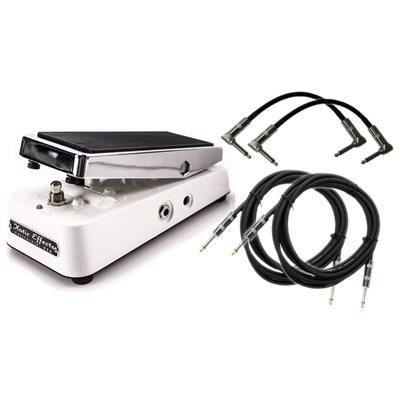 | Xotic Effects Wah XW-1 Guitar Effects Pedal |  (5 / 5) (5 / 5) | Check on Amazon |
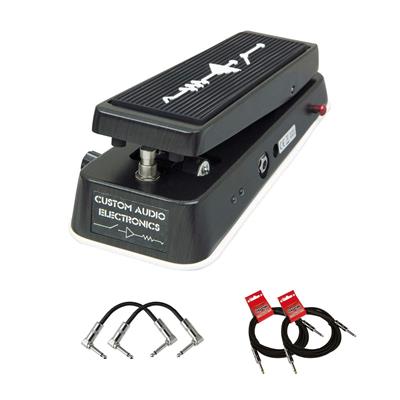 | MXR MC404 CAE Dual Inductor Wah Wah |  (5 / 5) (5 / 5) | Check on Amazon |
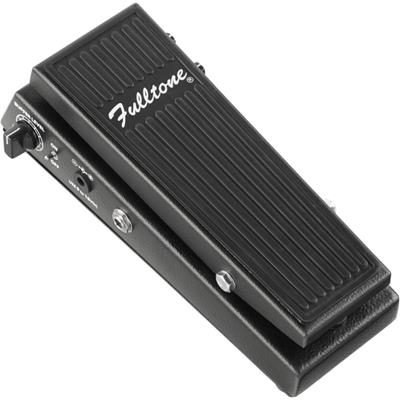 | Fulltone Clyde Deluxe Wah Pedal |  (4.9 / 5) (4.9 / 5) | Check on Amazon |
 | Dunlop 535Q Cry Baby Multi-Wah |  (4.9 / 5) (4.9 / 5) | Check on Amazon |
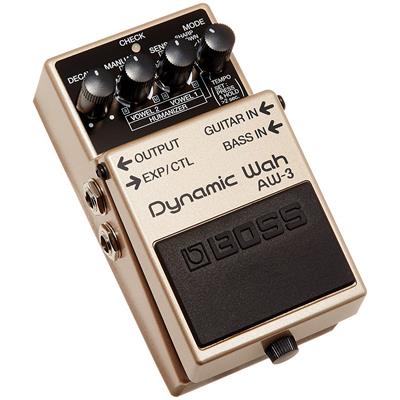 | Boss AW-3 Dynamic Wah |  (4.9 / 5) (4.9 / 5) | Check on Amazon |
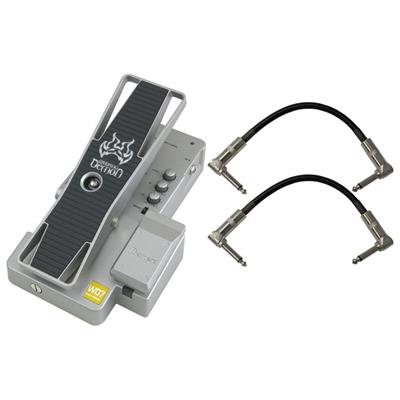 | Ibanez WD7 Weeping Demon Wah Pedal |  (4.8 / 5) (4.8 / 5) | Check on Amazon |
 | Morley VAI-2 Steve Vai Bad Horsie 2 Contour Wah |  (4.8 / 5) (4.8 / 5) | Check on Amazon |
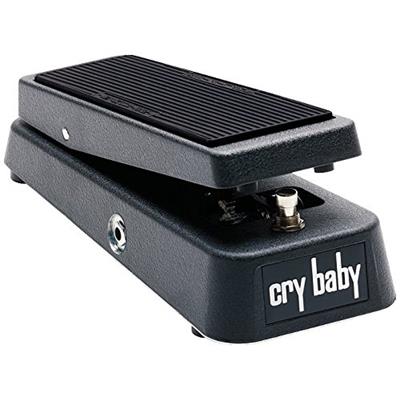 | Dunlop GCB95 Cry Baby Wah Guitar Effects Pedal |  (4.8 / 5) (4.8 / 5) | Check on Amazon |
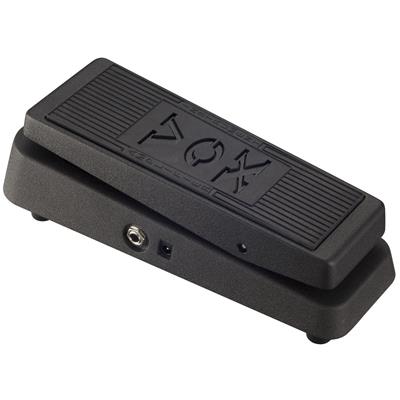 | Vox V845 Classic Wah Wah Pedal |  (4.8 / 5) (4.8 / 5) | Check on Amazon |
 | Joyo Classic Multi Wah Pedal |  (4.6 / 5) (4.6 / 5) | Check on Amazon |
Quick Picks: Top Wah Pedals 2025
 🏆 Best Overall: Dunlop Cry Baby Mini 535Q
🏆 Best Overall: Dunlop Cry Baby Mini 535Q
Amazon Price: ~$179 | ⭐⭐⭐⭐⭐ 4.8/5 Stars The industry standard in a compact format with maximum versatility.
💰 Best Budget: Vox V847-A Original Wah
Amazon Price: ~$149 | ⭐⭐⭐⭐⭐ 4.7/5 Stars
Classic vintage voicing from the company that invented the wah.
🎸 Best Classic: Dunlop GCB95 Cry Baby
Amazon Price: ~$99 | ⭐⭐⭐⭐⭐ 4.8/5 Stars The most recognizable wah pedal in the world – pure Cry Baby tone.
🚀 Best Modern: Boss PW-3 Wah
Amazon Price: ~$149 | ⭐⭐⭐⭐ 4.6/5 Stars Analog circuitry with modern features and bulletproof Boss reliability.
🎛️ Most Versatile: Xotic XW-1 Wah
Amazon Price: ~$299 | ⭐⭐⭐⭐⭐ 4.9/5 Stars Boutique-level control over every aspect of your wah tone.
What Makes a Great Wah Pedal?
Understanding Wah Pedal Fundamentals
A great wah pedal combines three essential elements: voicing, range, and build quality. The voicing refers to the character and frequency response of the filter, while range determines how wide the frequency sweep extends. Build quality ensures your pedal will withstand the rigors of live performance and studio use.
Key Features to Consider
Inductor Type: The heart of any wah pedal is its inductor. Red Fasel inductors provide classic vintage warmth, while yellow Fasel inductors offer brighter, more aggressive tones.
True Bypass vs. Buffered: True bypass preserves your signal integrity when the pedal is off, while buffered bypass can help maintain signal strength in long pedal chains.
Sweep Range: Different pedals offer various frequency ranges. Some focus on treble emphasis, while others provide more balanced frequency sweeps.
Additional Controls: Modern wah pedals may include Q controls (frequency width), boost switches, and multiple voicing options.
Detailed Reviews: Best Wah Pedals by Category
Best Overall: Dunlop Cry Baby Mini 535Q Wah
Why It’s Our Top Pick: The Cry Baby Mini 535Q delivers everything you’d expect from its bigger brother without taking up valuable pedalboard real estate. This compact powerhouse offers enough variation for all players while maintaining the classic Cry Baby DNA.
Key Features:
- Red Fasel Inductor: Provides vintage-voiced warmth and character
- Four Frequency Ranges: From bassier to more trebly sweeps
- Variable Q Control: Adjusts the intensity and width of the wah effect
- Boost Switch: Adds extra output for solos and leads
- True Bypass: Preserves signal integrity when disengaged
- Compact Size: Takes up minimal pedalboard space
Sound Character: The 535Q gives you control over two of the most important parameters – frequency centre and width – which allows you to modify the Q of the unit. This means you can fine-tune and customize the voicing of the wah and its filter.
Best For: Guitarists who want maximum versatility in a space-saving format. Perfect for players who haven’t found a wah that quite works for their sound but know they want one.
Amazon Availability: Consistently available with Prime shipping and excellent customer reviews averaging 4.8/5 stars.
Best Budget: Vox V847-A Original Wah Pedal
Why We Love It: Vox were responsible for bringing the first wah pedal to market – the Clyde McCoy – and early adopters included Hendrix, Zappa, Gilmour and Page. We’ve always found the Vox to be closer to the classic wah sound that we had in our heads.
Key Features:
- Vintage Circuit Design: Based on the original 1960s specifications
- Improved Inductor: Matches the character of vintage models while reducing noise
- Input Buffer: Protects signal integrity in complex pedal chains
- Classic Voicing: Subtly different filtering that sounds more musical
- Affordable Price Point: Professional quality without breaking the bank
Sound Character: The V847-A delivers that classic wah sound with striking vintage character. The tone is sharp and inviting, with less harshness than some modern interpretations.
Best For: Guitarists who use many effects pedals simultaneously. The added input buffer is a great tool for protecting signal strength and integrity, especially with long cable runs.
Amazon Reviews: Users consistently praise its authentic vintage tone and reliable performance, with many noting it sits perfectly in the mix without being overly aggressive.
Best Classic: Dunlop GCB95 Cry Baby Wah
The Gold Standard: The Cry Baby is without a doubt the most recognisable wah pedal in the world. It’s been used by everybody from Hammett to Morello, with each player making the pedal their own.
Key Features:
- Red Fasel Inductor: The classic component that defined the Cry Baby sound
- 100k Hot Potz Potentiometer: Ensures smooth, responsive sweep action
- Improved Bypass Switch: Reduces signal loss when disengaged
- Universal Power Jack: Compatible with standard 9V power supplies
- Tank-Like Construction: Built to withstand decades of use
Sound Character: The GCB95’s powerful sweep makes it one of the best wahs for cutting through swaths of distortion. The pedal delivers funky wah-wah sounds that capture the spirit of classic rock.
Best For: Players seeking the quintessential wah sound without extra features. Perfect for rock, blues, and classic metal applications.
Amazon Value: Consistently priced around $99, making it one of the best values in guitar effects. Over 2,000 positive reviews validate its enduring popularity.
Best Modern: Boss PW-3 Wah Pedal
Modern Reliability Meets Classic Tone: The Boss PW-3 is an analogue pedal with two modes. The first emulates a classic wah sound – which means a Dunlop Cry Baby – while the second ‘rich’ mode includes filtering to leave more of the lower frequencies in the signal.
Key Features:
- Dual Mode Operation: Classic and Rich voicing options
- Analog Circuitry: Warm, organic tone without digital artifacts
- Status LED: Know your pedal’s status at a glance in dark venues
- Boss Build Quality: Legendary durability and reliability
- Improved Switching: Better than classic units with modern components
- Compact Form Factor: Slightly smaller than vintage-style wahs
Sound Character: The Classic mode delivers authentic Cry Baby tones, while Rich mode maintains more low-end content throughout the sweep range – ideal for single-guitar arrangements.
Best For: Professional players who need reliability above all else, and guitarists who want modern conveniences with classic analog tone.
Why Choose Boss: When you absolutely need your gear to work, Boss delivers. The PW-3 represents their commitment to combining vintage character with modern reliability.
Most Versatile: Xotic XW-1 Wah Pedal
Boutique-Level Control: The XW-1 stands as one of the most adjustable and musical wah pedals available, offering unprecedented control over your wah tone.
Key Features:
- Bias Control: Adjusts warmth and output gain of the signal
- Wah Q Control: Modifies the vocal-like quality and response
- Treble and Bass EQ: Two-band tone shaping for different playing styles
- True Bypass: No tone coloration when disengaged
- Fuzz-Friendly Circuit: Works perfectly with vintage germanium fuzzes
- Self-Lubricating Pivot: Smooth, silent operation over time
Sound Character: The cold Bias produces transparent and smooth tones with vintage vibes, while warm bias adds more definition. The Wah Q Control achieves vocal-like effects by modifying the amount of wah in the signal.
Best For: Serious players who want complete control over their wah tone. Perfect for studio work and players who use wah as an integral part of their sound rather than an occasional effect.
Investment Value: While more expensive than mass-market options, the XW-1’s flexibility and build quality make it a long-term investment for dedicated players.
Best for Shredders: Morley Steve Vai Bad Horsie 2
Signature Aggression: Steve Vai’s signature wah has become somewhat synonymous with Morley’s wah voicing. This improved version features a second contour mode for adjusting frequency and tone to your taste.
Key Features:
- Switchless Operation: Activates when you step on it and move from heel position
- Dual Wah Modes: Standard and Contour modes for tonal versatility
- Electro-Optical Design: Uses light instead of mechanical potentiometers
- Silent FET Switching: No clicking sounds during activation
- Built-in Buffer: Maintains signal integrity and prevents loading
- Bypass Footswitch: Complete tone purist bypass option
Sound Character: Aggressive, cutting tone perfect for high-gain applications. The switchless design makes it ideal for quick wah bursts and rhythmic applications.
Best For: Metal and hard rock players who need aggressive wah tones and the convenience of switchless operation.
Note on Operation: The momentary action is useful for short, sharp bursts, though some players online have complained about how it works, so it’s probably best to try it yourself.
Best Vintage Sound: Fulltone Clyde Deluxe Wah
Three Voices of History: The Clyde Deluxe offers three distinct wah voices representing different eras of wah pedal evolution.
Key Features:
- Three Selectable Modes: Jimi (1960s Vox), Shaft (funk), and Wacked (colorful treble)
- 10-Step Input Level Control: Precise gain matching for any guitar
- Adjustable Treadle Tension: Customize the pedal feel to your preference
- Internal Buffer: Ensures compatibility with other pedals
- True Point-to-Point Wiring: Boutique construction quality
- Voltage Sag Control: Simulates dying battery sounds
Sound Character: The Jimi setting recreates 1960s Vox Voodoo Child tone, the Shaft knob dials in superbad funk grooves, while Wacked control creates colorful treble emphasis.
Best For: Players who want multiple classic wah voices in one pedal and don’t mind a learning curve for maximum versatility.
Consideration: This pedal requires time to master but rewards dedicated users with unparalleled tonal options.
Best Auto-Wah: Boss AW-3 Dynamic Wah
Hands-Free Expression: The BOSS AW-3 Dynamic Wah pedal offers an abundance of auto-wah and dynamic wah effects, with its special “Humanizer” effect replicating human vowels for more natural-sounding wah.
Key Features:
- Humanizer Mode: Creates vowel-like sounds for unique expression
- Dual Input Channels: Optimized settings for guitar and bass
- Tap Tempo Function: Sync wah speed to your song’s tempo
- Sensitivity Control: Adjusts response to your playing dynamics
- Manual and Auto Modes: Traditional pedal control or hands-free operation
- Boss Reliability: Professional build quality and consistent performance
Sound Character: The AW-3 excels at creating funky, envelope-filtered sounds that respond to your playing intensity. The Humanizer mode adds a unique vocal quality impossible to achieve with traditional wahs.
Best For: Funk players, experimental musicians, and anyone wanting auto-wah capabilities alongside traditional wah functions.
Best Compact Option: Mooer The Wahter Mini
Big Sound, Small Size: The Wahter’s main selling points are obvious – it’s cheaper and absolutely tiny. If you don’t have the pedalboard real estate for a full-fat wah, there’s a good chance you can fit the Wahter.
Key Features:
- Ultra-Compact Design: Only slightly larger than standard Mooer mini pedals
- True Bypass: No tone coloration when disengaged
- Cry Baby-Style Voicing: Familiar tone in an impossibly small package
- Standard 9V Power: Uses common pedalboard power supplies
- Affordable Price Point: Professional wah tone without the premium cost
Sound Character: The voicing closely resembles a Cry Baby, making it familiar to most players while taking up minimal space.
Best For: Players with crowded pedalboards who still want quality wah tones. Perfect for grab-and-go rigs and budget-conscious musicians.
Consideration: Mini wahs can be challenging for larger feet, as you can’t fit pedals above or below them as easily.
How Wah Pedals Work: The Complete Guide
The Science of Wah
Wah pedals work by moving the center frequency of a resonant bandpass filter, boosting a band of audio while attenuating other frequencies. This resonant peak sweeps up and down as the player moves the rocker plate, creating the dynamic, vocal effect of the wah.
Key Components Explained
Inductor: The heart of the wah circuit, inductors shape the frequency response and character of the effect. Different inductor types (Red Fasel, Yellow Fasel, etc.) create distinct tonal signatures.
Potentiometer: Controls the frequency sweep as you rock the pedal. Higher quality pots provide smoother action and longer life.
Capacitors: Work with the inductor to determine the frequency range and resonance characteristics.
Buffer Circuits: Modern wahs often include input/output buffers to maintain signal integrity and prevent tone loss.
Understanding Q Factor
Q refers to the ratio of centre frequency to bandwidth. Think of it simply as whether the frequency range boosted by the filter is narrow or wide. Higher Q settings create more dramatic, focused effects, while lower Q provides subtler, more musical results.
Placement in Your Signal Chain
While most players place a wah pedal at the start of their chain, you can get dramatic, psychedelic sounds if you place a brightly-voiced wah pedal after your drives, or after a fuzz. Experiment with different positions to find your preferred sound.
Wah Pedal History: From Accident to Icon
The Accidental Innovation
The wah pedal’s origin story reads like musical serendipity. In November 1966, Bradley J. Plunkett of Warwick Electronics Inc. (Thomas Organ Company) created what would become one of the most iconic guitar effects in history – completely by accident.
The Thomas Organ Discovery
While Thomas Organ Company was developing solid-state Vox amplifiers, engineers noticed an interesting sound effect during circuit testing. Technical consultant Bill Page experimented by playing his saxophone through the modified circuit housed in a volume pedal enclosure. The CEO listened to this prototype and immediately recognized its potential.
From Clyde McCoy to Cry Baby
The first wah pedal was marketed under the name “Clyde McCoy,” after the famous trumpet player, reflecting the original intention to market it to wind instrument players. However, guitarist Del Casher convinced the company that the effect would work even better with electric guitar.
In February 1967, the first Clyde McCoy wah hit the market. Shortly after, Thomas Organ changed the name to “Cry Baby” for the American market, inadvertently failing to trademark the name. This oversight led to the proliferation of “Cry Baby” copies worldwide, making the name generic rather than proprietary.
The Guitar Revolution
The wah pedal quickly found its way into the hands of legendary guitarists who would define its place in music history:
Eric Clapton: Featured wah prominently on Cream’s “Tales of Brave Ulysses” (1967), introducing the effect to mainstream rock audiences.
Jimi Hendrix: Made the wah an extension of his musical voice, most famously on “Voodoo Child (Slight Return)” and “Burning of the Midnight Lamp.”
Jimmy Page: Used wah extensively with both the Yardbirds (“Little Games”) and Led Zeppelin (“Custard Pie,” “Trampled Under Foot”).
Tony Iommi: Black Sabbath’s architect incorporated wah into metal’s foundation on tracks like “Black Sabbath,” “The Wizard,” and “N.I.B.”
Modern Evolution
Today’s wah pedals represent decades of refinement and innovation while maintaining the core concept that made the original so compelling. Modern features like true bypass, LED indicators, and multiple voicing options have expanded the wah’s versatility without losing its essential character.
Buying Guide: Choosing Your Perfect Wah
Determining Your Needs
Musical Style Considerations:
- Classic Rock/Blues: Traditional Cry Baby or Vox voicing
- Funk: Emphasis on percussive, rhythm-focused wahs
- Metal: Aggressive, cutting tones that work with high gain
- Experimental: Multi-mode pedals with unusual features
Budget Categories
Under $100: Basic but functional wahs like the Dunlop GCB95 $100-$200: Feature-rich options like the Boss PW-3 and Vox V847-A
$200-$300: Boutique models like the Xotic XW-1 $300+: Premium options with extensive customization
Essential Questions to Ask
- Do you need true bypass or is buffered bypass acceptable?
- How important is pedalboard space?
- Do you want multiple voicing options or one great sound?
- Will you use it for lead lines, rhythm parts, or both?
- Do you need additional features like boost or auto-wah modes?
Testing Tips
When possible, test wah pedals with your own guitar and amplifier setup. Pay attention to:
- Sweep range: Does it cover the frequencies you want to emphasize?
- Mechanical feel: Is the pedal action smooth and responsive?
- Tonal character: Does it complement your playing style and guitar tone?
- Build quality: Does it feel sturdy enough for your intended use?
Frequently Asked Questions
What’s the difference between true bypass and buffered bypass?
For most pedal types, whether or not a pedal is true bypass is an important question. Most wah pedals are not true bypass though, so there is the question of whether you will experience ‘tone suck’ from the wah. True bypass physically disconnects the circuit when the pedal is off, while buffered bypass maintains the signal through active circuitry. Both have advantages depending on your setup.
Where should I place my wah pedal in my effects chain?
Traditional placement is at the beginning of your signal chain, right after your guitar. However, placing wah after overdrive or fuzz pedals can create interesting psychedelic textures worth exploring.
Can I use a wah pedal with bass guitar?
Yes! Many wah pedals work well with bass, though some models like the Boss AW-3 include specific bass-optimized settings. The lower frequencies of bass guitar can create unique, percussive wah effects.
How do I maintain my wah pedal?
Regular maintenance includes:
- Cleaning the potentiometer with contact cleaner if it becomes scratchy
- Checking and tightening the treadle mechanism
- Protecting the pedal from excessive moisture and temperature changes
- Using quality cables and power supplies to prevent signal issues
What makes vintage wah pedals so desirable?
Vintage wahs often feature components and construction methods no longer used in modern manufacturing. Original Fasel inductors, specific capacitor types, and hand-wired circuits can create subtle tonal differences that some players find more musical than modern equivalents.
Do I need an expensive wah pedal to get good sounds?
Not necessarily. Many affordable wahs like the Dunlop GCB95 deliver excellent results. However, more expensive pedals often offer better build quality, additional features, and more refined tonal characteristics that can be worth the investment for serious players.
Conclusion: Finding Your Voice
The wah pedal remains one of the most personal and expressive effects in a guitarist’s arsenal. Whether you’re drawn to the classic quack of a vintage Cry Baby, the versatility of a modern multi-mode pedal, or the aggressive bite of a signature model, the right wah pedal can unlock new dimensions in your playing.
From Hendrix’s psychedelic explorations to modern metal’s percussive attacks, the wah pedal continues to inspire new generations of musicians. The key is finding the pedal that responds to your touch, complements your musical style, and inspires you to explore new sonic territories.
Remember that the best wah pedal is the one that makes you want to play more. Don’t get lost in specifications and features – focus on finding the pedal that feels like a natural extension of your musical expression. Whether that’s a budget-friendly classic or a boutique masterpiece, the right wah pedal will become an indispensable part of your musical voice.
The journey to finding your perfect wah starts with understanding your needs, trying different options, and most importantly, trusting your ears. In the end, the wah pedal that makes you smile when you step on it is the right choice – regardless of price, brand, or feature set.
Ready to add that expressive wah voice to your guitar rig? Each of these pedals represents years of refinement and countless hours of musical inspiration. Choose the one that calls to you, and prepare to discover new dimensions in your guitar playing.
Xotic Effects Wah XW-1 Guitar Effects Pedal

Xotic Effects Wah XW-1 offers unlimited amount of sounds on your pedal, with an abundance of flexibility, adjustability and versatility. It has a self-lubricating nylon bushing pivot, which makes its operation smooth and soundless. XW-1 offers a true bypass and prevents your sound signal from losing its frequency. It is equipped with Bias control, allowing you to adjust the firmness and add more output to the signal, as well as make the wah more defined (a.k.a. warm bias). The cold Bias produces transparent and smooth tones, touching up your music with vintage vibes. Wah Q Control lets you achieve vocal-like effects by modifying the amount of the wah in the sound signal. XW-1 has Treble and Bass controls, basically a two-band EQ, that lets you adjust the voicing for different playing styles.
Pros:
- Fuzz-friendly
- Extremely versatile
- Outstanding tone control
Cons:
- Big size
- Gain control is not easily accessible

 🏆 Best Overall: Dunlop Cry Baby Mini 535Q
🏆 Best Overall: Dunlop Cry Baby Mini 535Q



